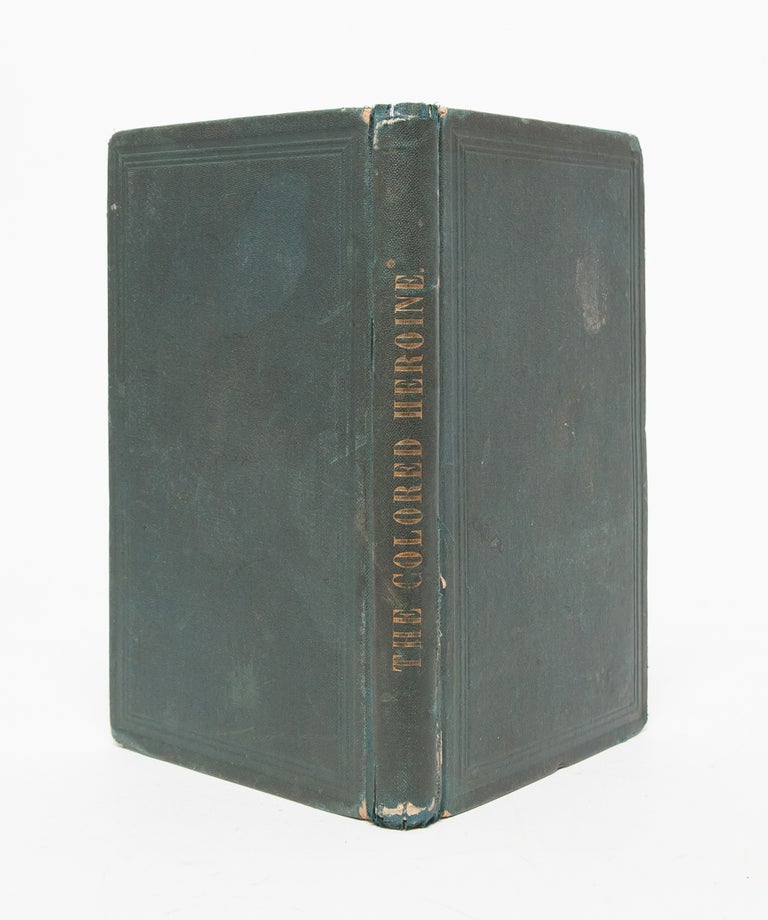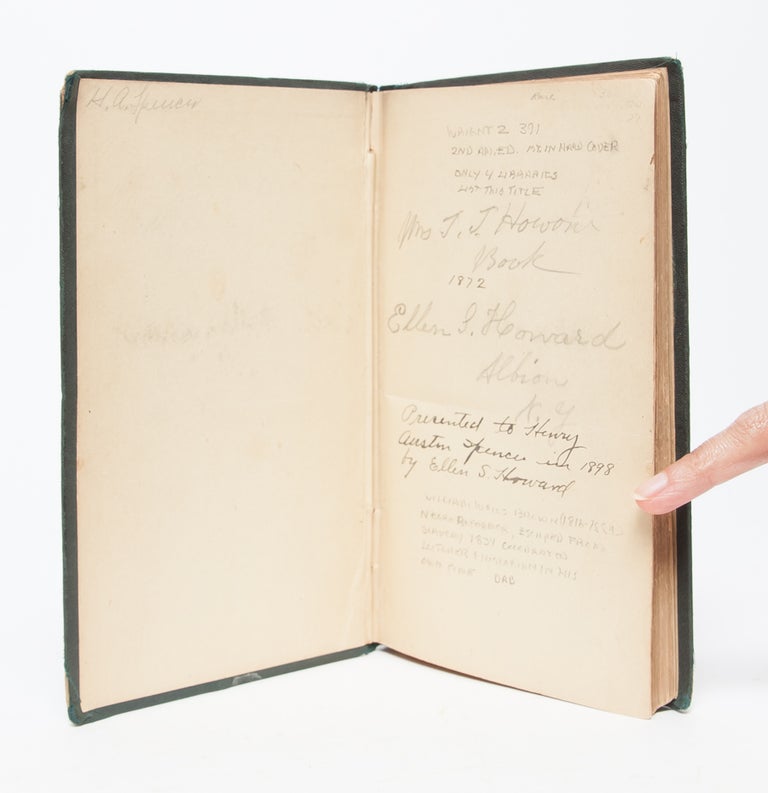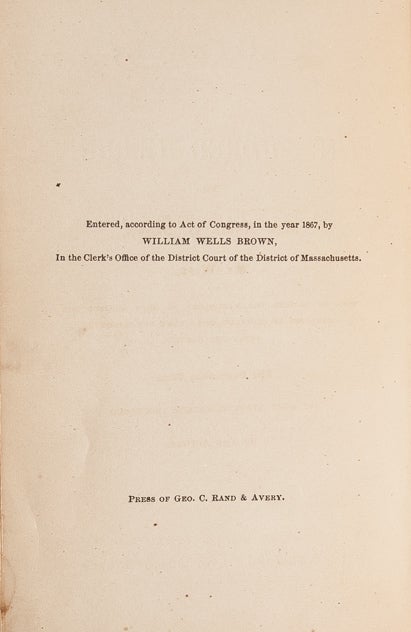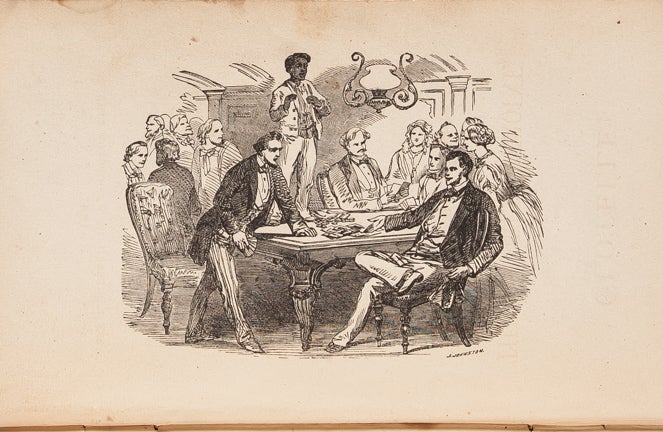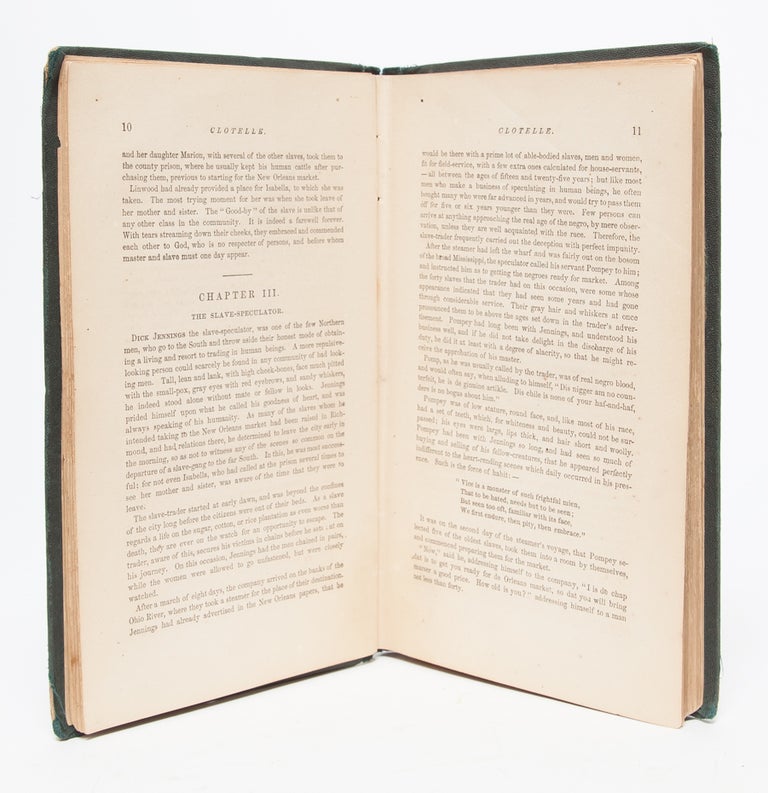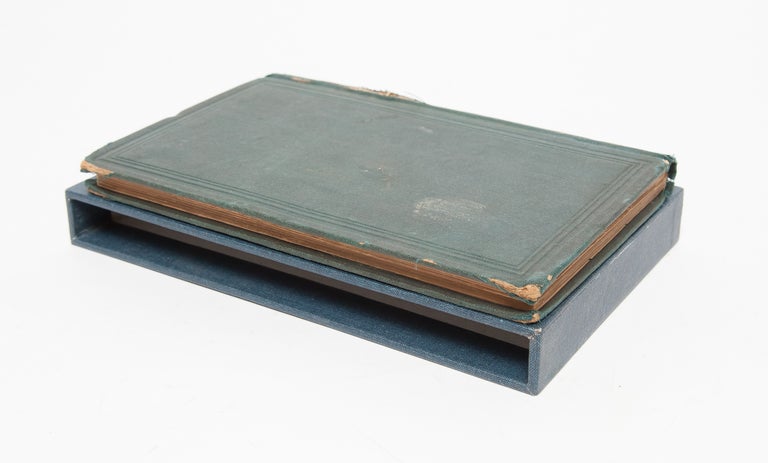Clotelle: or, The Colored Heroine, a Tale of the Southern States (Association Copy)
Boston: Lee & Shephard, 1867.
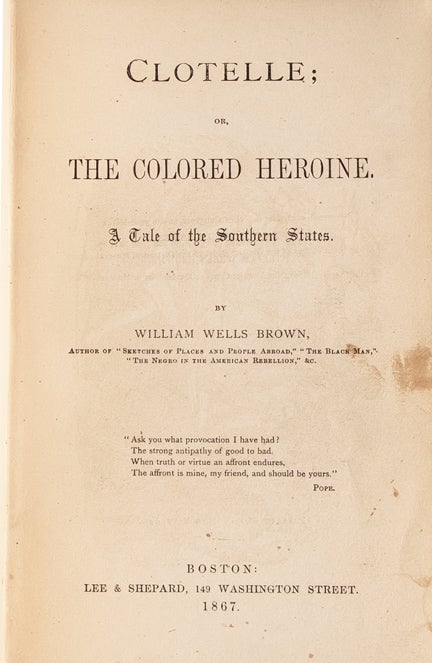

Clotelle: or, The Colored Heroine, a Tale of the Southern States (Association Copy)
Boston: Lee & Shephard, 1867. First Thus. Third edition overall. Original publisher's cloth binding with gilt to spine. Rubbed at extremities with some loss to corners and spine ends; cloth split along outer joints. Front and rear hinges tender, with some separation to both near the top of text block. Rear endpaper adhered partially to pastedown. Internally with occasional toning and soiling to margins not affecting text. Ownership signature of H.A. Spencer to front pastedown; signatures of Mrs. T.S. Howard and Ellen S. Howard to front endpaper along with gift inscription from Ellen to Henry Austin Spencer. Complete, including frontis and four full-page illustrations. Housed in a custom slipcase. Widely considered the first novel published by a Black writer, it is hailed by Blockson as "elusive and priceless." Both the 1852 first edition and the 1867 expansion are scarce institutionally and in trade. The only copy on the market; prior to the present volume, no other edition of Clotelle had appeared at auction in over 20 years.
Ownership signatures to the front pastedown and endpaper track the present copy's transmission among diverse readers as well as its notable provenance. Originally owned by Thankfull S. Howard, wife of Albion, New York warehouse owner Asa, the book was passed to her daughter Ellen in 1872, who in turn gave it in 1898 to a former employee and family friend Henry Austin Spencer (ca. 1852-1935). Born into slavery, Spencer became the first Black person to be accepted to the University of Rochester. He studied law, before spending decades in the New York state legislature. When Rochester's most famous resident, the great abolitionist and leader Frederick Douglass died in 1895, Spencer served as one of Douglass's pallbearers.
Beyond its exceptional provenance, the present novel is a foundational moment in American literature. William Wells Brown was one of the most intriguing Black authors of the 19th century. Born enslaved in Kentucky, Brown self-emancipated in 1834 and then worked on steamship lines and as a conductor on the Underground Railroad for almost a decade. For the next four decades, Brown was a prominent literary figure and antislavery activist both in the United States and in Europe, publishing widely and in varied forms. Clotelle participates in this activism, graphically representing in each of its revisions the physical, sexual, and psychological violence that defined life for enslaved persons, especially women.
At Clotel's release in London in 1853, it was recognized as the first novel published by a Black author. Over the next fifteen years, Brown continued publishing revisions of the novel in the U.K. and in the U.S. Notably, the London editions featured a storyline that addressed the open secret of Thomas Jefferson's relationship with one of the women he enslaved at Monticello, Sally Hemings. In its earliest iteration, the plot begins with the auction of Jefferson's mistress, here named "Currer," and her two daughters Althesa and Clotel. After the women are tragically torn apart, Brown's novel traces their intersecting stories. Violence and tragedy await the Black characters in Clotel, even as Thomas Jefferson and other White politicians sit nearby, unwilling to confront the destructive realities of chattel slavery despite their commitment to principles of liberty and equality.
Brown published the present iteration of the novel in the U.S. in 1867 under the title Clotelle: or, The Colored Heroine, a Tale of the Southern States. Here, Clotelle is the granddaughter of an unnamed U.S. senator and an enslaved woman. Living in Europe with her husband Jerome, a fugitive enslaved man, the couple returns to the U.S. at the outbreak of the Civil War. Jerome enlists in the Army but is killed in battle, and Clotelle becomes a nurse for the Union. After the war, Clotelle purchases the plantation where she had been enslaved and opens a school to educate freedmen and freedwomen in the Reconstruction Era. By expanding the novel with four new chapters, Brown updated the novel to address the Civil War and its aftermath, and to imagine a new future for Black Americans.
Blockson 32. Sabin 8590. (Item #3519)

